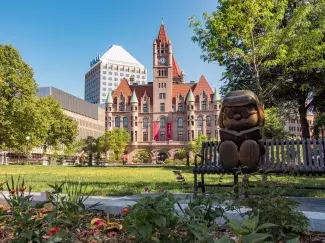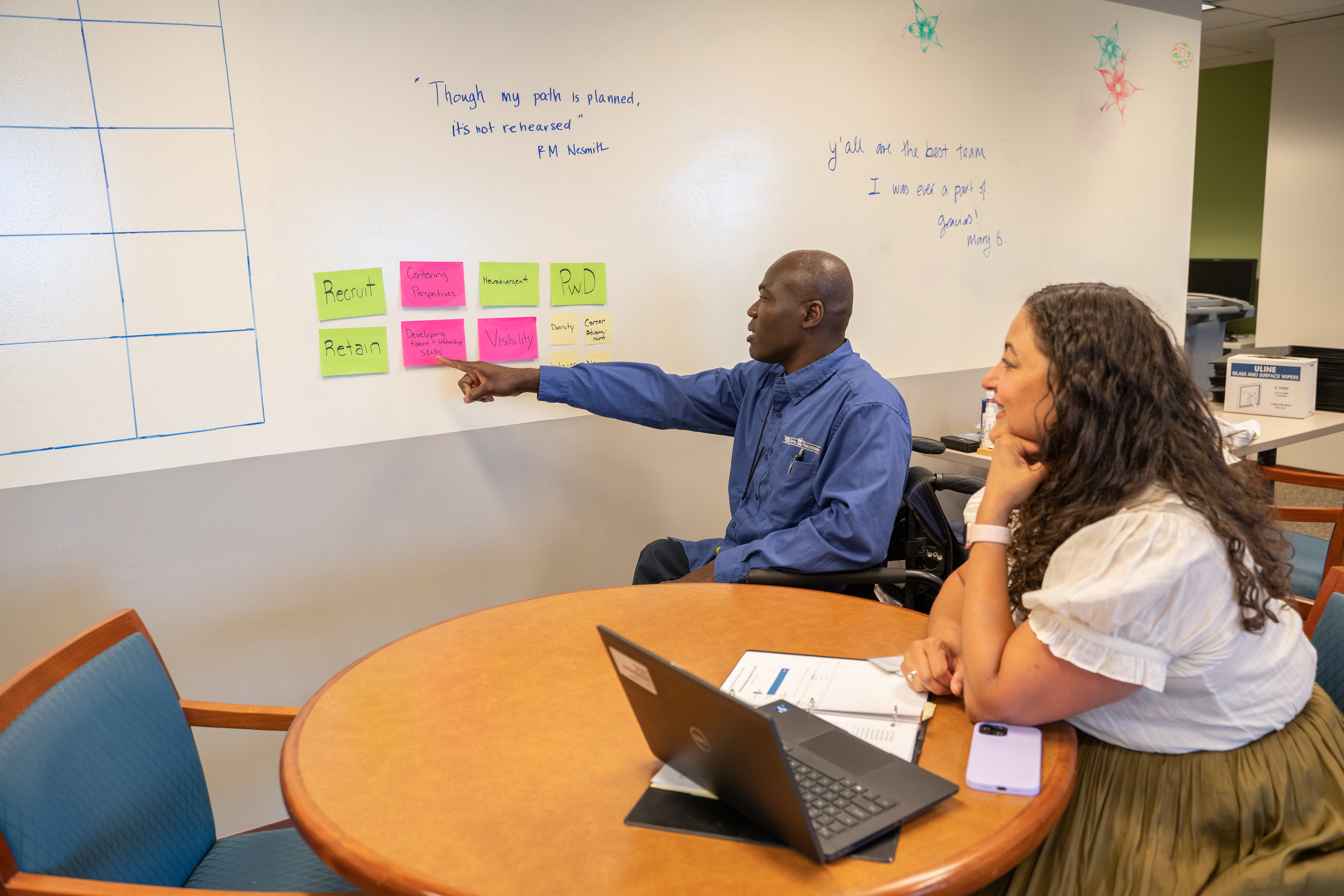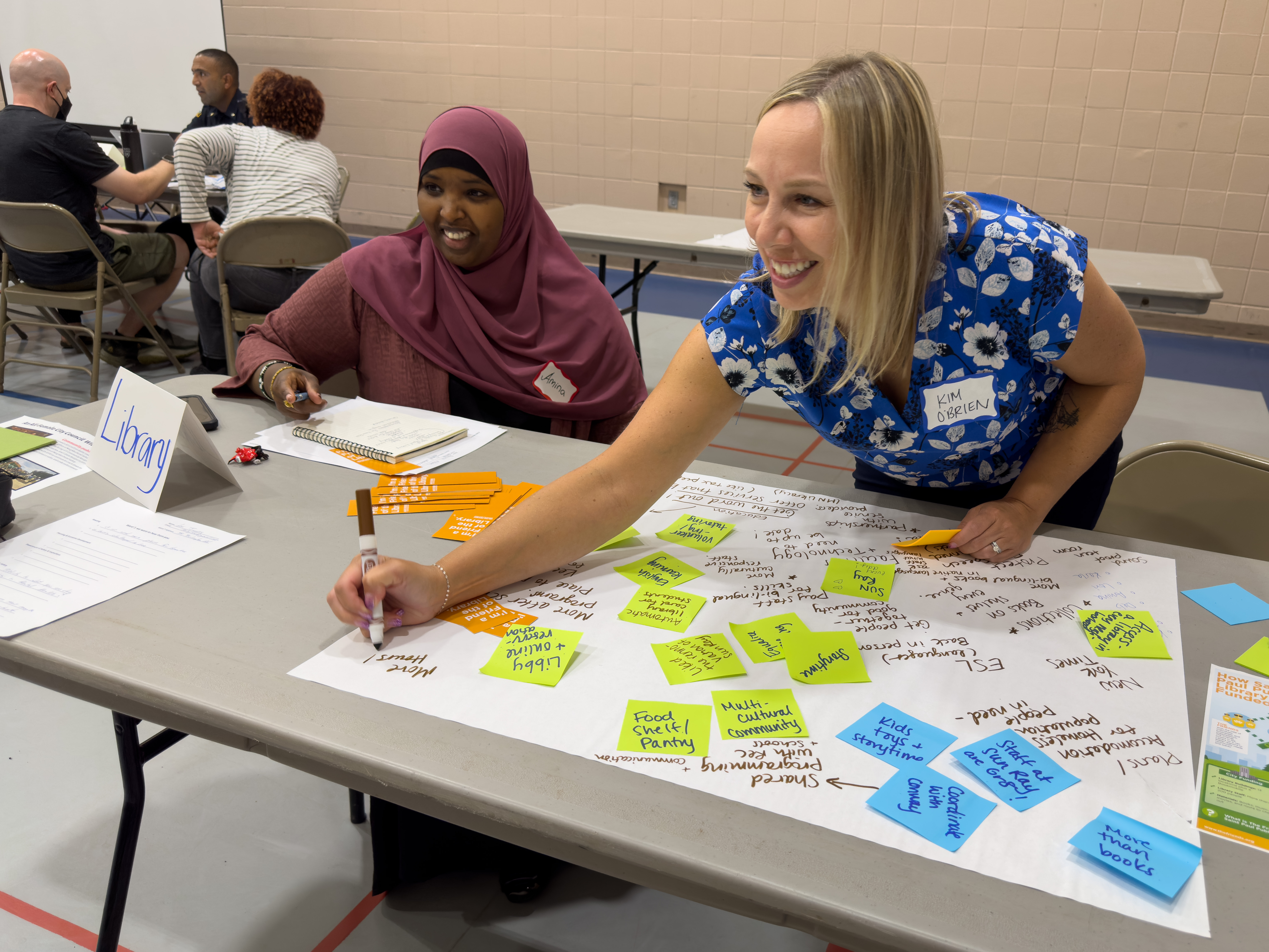Community-First Public Safety and Downtown Revitalization
In 2025, the City of Saint Paul is focused on two key priorities that are foundational to the future growth of the city: CommunityFirst Public Safety and Downtown Revitalization. These priorities are not just goals in isolation—they mutual reinforce strategies that work hand-in-hand to preserve Saint Paul’s future prosperity. A revitalized downtown, supported by a public safety system that addresses the full range of needs in the community, fosters an environment of opportunity, growth, and well-being for all residents and visitors. As the city faces the challenges of 2025, these priorities will guide efforts to create a stronger, safer, and more vibrant Saint Paul for generations to come
Community-First Public Safety

The Community-First Public Safety framework is Saint Paul’s comprehensive, proactive approach to public safety. This strategy is grounded in the principle that meaningful, lasting change is accomplished by addressing systemic challenges and root causes of gun and group violence, mental health crises, substance abuse, and homelessness. Traditional approaches to public safety often fail to consider the broader social determinants of crime. By shifting to a model that emphasizes prevention, intervention, and collaboration between law enforcement, the Office of Neighborhood Safety, and community organizations, the city addresses violence and criminal behavior, creating a safer environment for everyone. Public safety is the bedrock upon which a thriving city is built. Without it, residents, workers, and visitors feel unsafe, businesses will be reluctant to invest in the community, and revitalizing downtown fails to materialize. Crime, drug use, and homelessness not only harm the individual directly impacted, but it also detracts from the city’s reputation and ability to attract new economic opportunities. Safety – real and perceived - in our community is directly linked to our city’s long-term success. The Community-First Public Safety strategy fosters an environment where all residents feel secure, supported, and connected to resources. By strengthening the city’s public safety infrastructure—through trusted law enforcement efforts, expanded mental health services and crisis intervention, and restorative justice initiatives—Saint Paul will address the root causes of crime and create a more resilient, inclusive, and equitable city.
Downtown: Our Economic Engine

Downtown Saint Paul has long been the economic engine that drives the success of the capital city. It is where the highest concentration of property tax revenue is generated, funds which are crucial for supporting city services. In addition, it is the focal point of sales tax revenue, which directly funds investments in critical infrastructure like parks, recreation centers, and streets. However, like many cities across the country, Downtown Saint Paul has faced significant challenges in the wake of the COVID-19 pandemic. As property values decrease, this ripple effect shifts the property tax burden onto homeowners, resulting in increased pressure on families already struggling with rising costs. When downtown struggles to rebound, it affects the entire community. Without decisive action, downtown’s decline could become a major economic crisis for Saint Paul, undermining both the city’s financial stability and residents’ quality of life. Revitalizing downtown is critical to the long-term economic health of the entire city. If action is not taken now, the city risks further economic decline and lost tax revenue. Revitalizing downtown is a catalyst that will create jobs and improve the local economy. By attracting new businesses, creating mixed-use developments, and investing in the infrastructure needed to support these projects, Saint Paul can ensure that downtown remains the vibrant, thriving center of the city.


